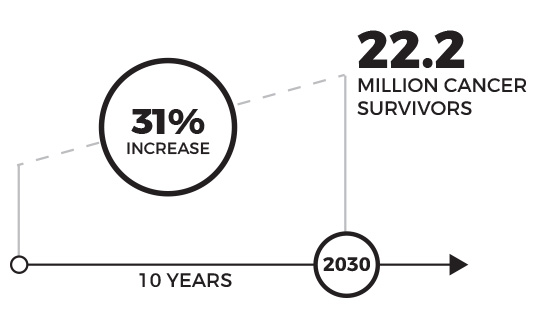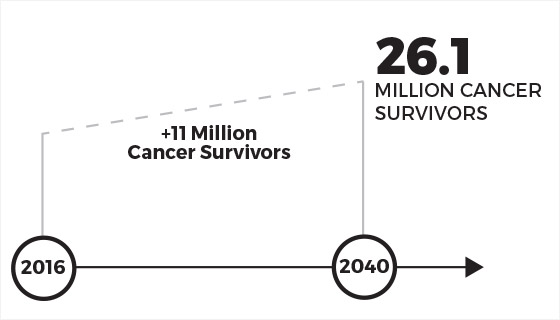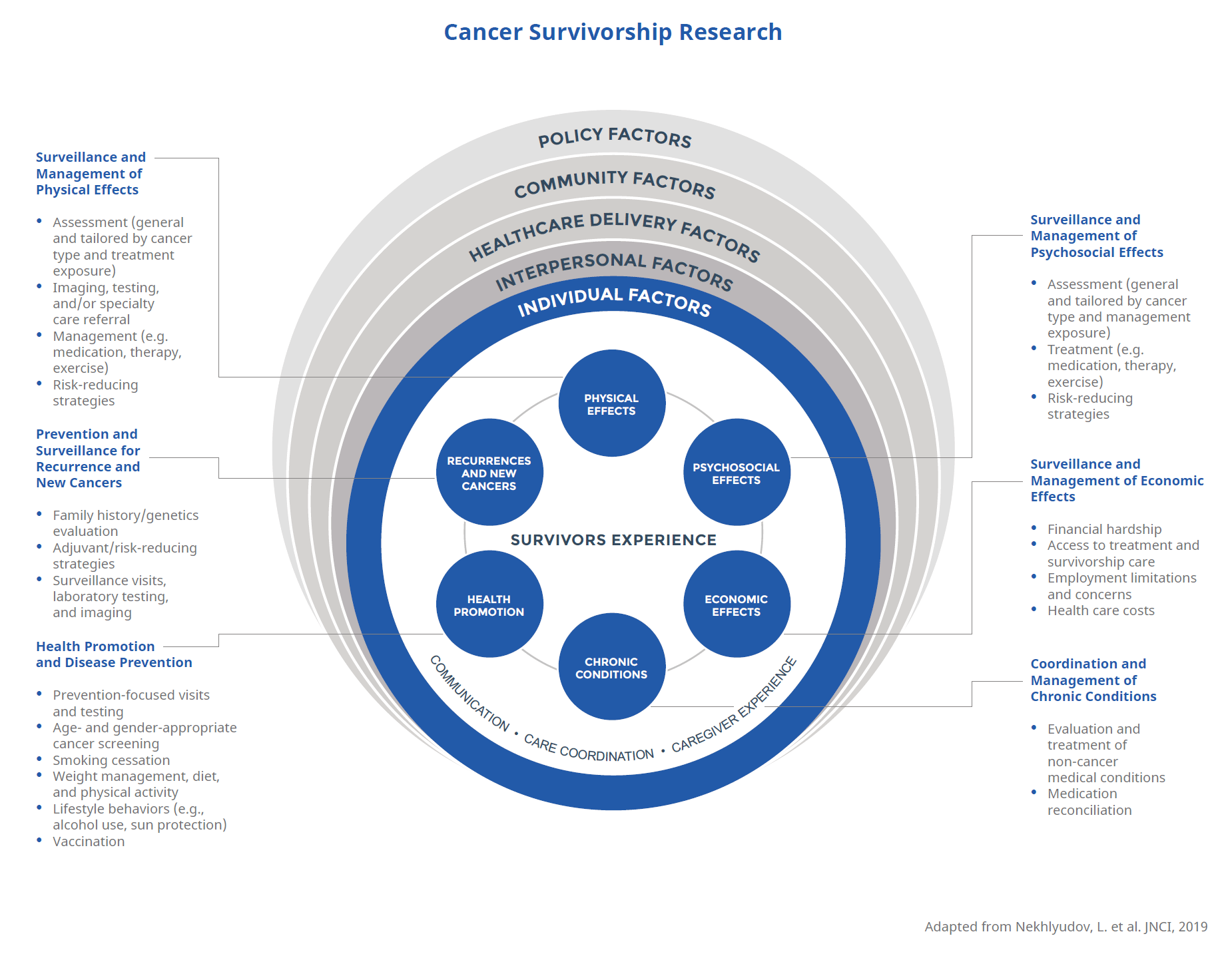How to Change Graph to Logarithmic in Excel
- Office of Cancer Survivorship
- Statistics, Graphs and Definitions
Many people don't realize that individuals are considered survivors from the time of a cancer diagnosis through the rest of their life. Learn about key survivorship-related terms, and find survivorship-related statistics and graphs.
For additional cancer-related statistics, please visit NCI's Surveillance, Epidemiology, and End Results (SEER) Program.
Statistics
As of January 2019, it is estimated that there are 16.9 million cancer survivors in the United States. This represents approximately 5.0% of the population. 1

The number of cancer survivors is projected to increase by 31.4%, to 22.2 million, by 2030.1

The number of cancer survivors is projected to grow to 26.1 million by 2040.1
Over the next decade, the number of people who have lived 5 or more years after their cancer diagnosis is projected to increase approximately 33%, to 15.1 million.1
In 2019, 67% of survivors (10.3 million) have survived 5 years or more after diagnosis; 45% have survived 10 years or more; and 18% have survived 20 years or more.1
More Details About Cancer Survivors
64% of survivors are currently age 65 or older.1
It is estimated that by 2040, 73% of cancer survivors in the United States will be age 65 or older.2
Among today's survivors, the most common cancer sites represented include female breast (23%, 3.9 million), prostate (22%, 3.7 million), colorectal (9%, 1.5 million), melanoma (8%, 1.4 million), and gynecologic (8%, 1.3 million).* 1
* Note: People may be represented more than once in these percentages if they have been diagnosed with more than one cancer. For example, a man who has survived both colorectal cancer and prostate cancer will be included as both a colorectal cancer survivor and as a prostate cancer survivor. Therefore, the sum of the percentages may be more than 100%.
Footnotes
Definitions
Cancer Survivor: An individual is considered a cancer survivor from the time of diagnosis, through the balance of life. There are many types of survivors, including those living with cancer and those free of cancer. This term is meant to capture a population of those with a history of cancer rather than to provide a label that may or may not resonate with individuals.
Adapted from the National Coalition for Cancer Survivorship
Cancer Survivorship Research: Cancer survivorship research seeks to improve the health and well-being of cancer survivors and caregivers providing care to survivors. It aims to improve understanding of the sequelae of cancer and its treatment and to identify methods to prevent and mitigate adverse outcomes, including functional, physical, psychosocial, and economic effects (Figure 2). This research also includes and informs the design, delivery, and implementation of evidence-based strategies and the coordination of healthcare services to optimize survivors' health and quality of life from the time of diagnosis through the remainder of the survivor's life. Any cancer survivorship research should clearly identify the type of survivor being studied (e.g. age, type and stage of cancer, time since diagnosis) and the outcomes of the research (e.g. function, quality of life, health care utilization, costs, survival).
Figure 2. Cancer Survivorship Research Framework

×

Adapted from Nekhlyudov, L, Mollica, M., Jacobsen, P., Mayer, DK, Shulman, LN, Geiger, AM. (2019). Developing a Quality of Cancer Survivorship Care Framework: Implications for Clinical Care, Research and Policy. JNCI, 111(11): djz089, first published online May 16, 2019.
- Cancer Incidence
- The cancer incidence rate is the number of new cancers of a specific site/type occurring in a specified population during a year, usually expressed as the number of cancers per 100,000 population at risk.1
- Cancer Prevalence
- Cancer prevalence is the number of people alive on a certain date who have been diagnosed with cancer. This includes individuals who are newly diagnosed, in active treatment, have completed active treatment, and those living with progressive symptoms of their disease. Prevalence is derived from long-term incidence and survival rates.1, 2
- Complete Prevalence
- Represents the proportion of people alive on a certain day who previously had a diagnosis of the disease, regardless of how long ago the diagnosis was, or if the patient is still under treatment or is "cured."2
- Limited Duration Prevalence
- Represents the proportion of people alive on a certain day who had a diagnosis of the disease within the past x years (e.g. x = 5, 10, 20, or 25 years).2
- Observed Survival Rate
- The observed survival rate, which is obtained using standard life table procedures, represents the proportion of cancer patients surviving for a specified length of time after diagnosis.1
For other cancer terms, see the NCI Dictionary of Cancer Terms.
Footnotes
- 1class="small">Howlader N, Noone AM, Krapcho M, Miller D, Brest A, Yu M, Ruhl J, Tatalovich Z, Mariotto A, Lewis DR, Chen HS, Feuer EJ, Cronin KA (eds). SEER Cancer Statistics Review, 1975-2017, National Cancer Institute. Bethesda, MD, https://seer.cancer.gov/csr/1975_2017/, based on November 2019 SEER data submission, posted to the SEER web site, April 2020.
- 2class="small">Cancer Prevalence Statistics Overview
Last Updated
September 23, 2021
How to Change Graph to Logarithmic in Excel
Source: https://cancercontrol.cancer.gov/ocs/statistics